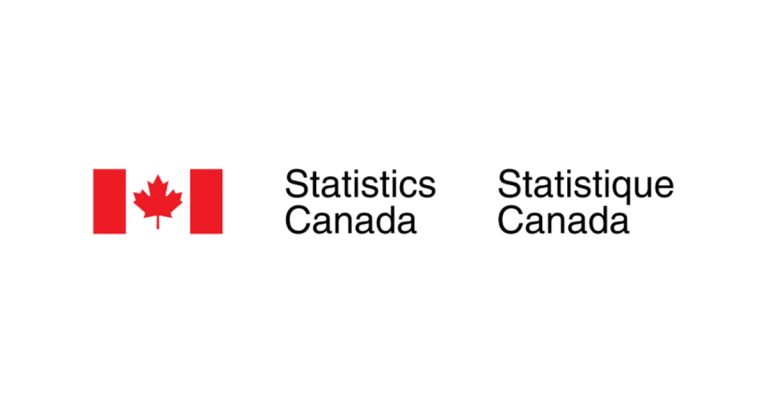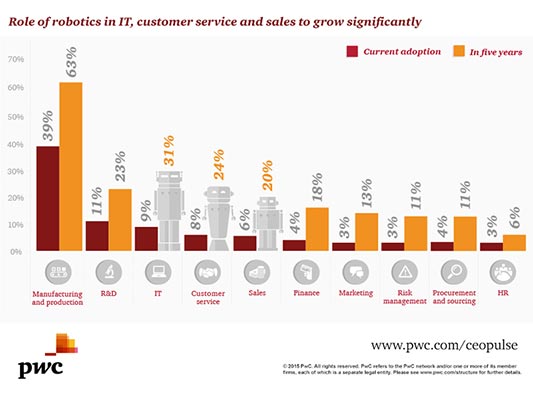Real GDP Remained Stable in June
Sept 4, 2018
Real gross domestic product (GDP) was essentially unchanged in June, following a 0.5% gain in May. Increases in 12 of the 20 industrial sectors were tempered by reduced output in non-conventional oil extraction and lower activity in wholesale and retail trade. The output of goods-producing industries contracted 0.2% while services-producing industries edged up 0.1% as most of the sectors grew.
Mining, quarrying, and oil and gas extraction contracts for the first time in five months
Following four consecutive months of growth, mining, quarrying and oil and gas extraction declined 0.9% in June.
Oil and gas extraction was down 1.0% as non-conventional oil extraction (-2.4%) declined for the first time in five months. Output was affected by a power outage at a production facility in late June. Conventional oil and gas extraction increased 0.3% as higher crude petroleum extraction more than offset lower natural gas extraction.
Support activities for mining and oil and gas extraction were down 1.4% on lower activity by drilling and rigging services along with support activities for mining.
Mining (excluding oil and gas extraction) edged down 0.1% in June. Metal ore mining was down 0.6% largely due to a decline in iron ore mining. Non-metallic mineral mining was up 1.4% on an export-influenced increase in potash mining. Coal mining declined 5.8%.
Wholesale and retail trade decline
With a 0.9% decline in June, the wholesale trade sector continued its sequence of increases alternating with smaller declines since the beginning of 2018. The decline was broad based, with eight of nine subsectors contracting. Following six months of growth, machinery, equipment and supplies wholesaling declined 0.8% as wholesaling of “other” machinery and equipment (such as office, store, professional and service establishment machinery) was down. Miscellaneous wholesaling contracted 1.4% from a decline in agricultural supplies. Motor vehicle and parts wholesaling (-1.6%) was down for a third consecutive month.
Following its largest increase since October 2017 in May (+2.2%), the retail trade sector edged down 0.2%, as 7 of the 12 subsectors declined. The largest drops in activity were at motor vehicle and parts dealers (-1.4%) and clothing and clothing accessories stores (-1.7%), as both subsectors essentially returned to their March 2018 levels. There were notable increases at food and beverage stores (+0.7%), building material and garden equipment and supplies dealers (+0.8%) and non-store retailers (+2.4%).
Offices of real estate agents and brokers increase
The real estate and rental and leasing sector was up 0.4% in June. The output of offices of real estate agents and brokers grew 4.8% in June as home resale activity increased in the majority of Canadian markets, led by growth in the Greater Toronto Area.
The increased activity in real estate contributed to a 0.5% rise in professional, scientific and technical services, as legal services increased 2.0%. Most other industries in the sector increased, led by a 0.4% gain in computer systems design and related services.
Manufacturing resumes growth
The manufacturing sector was up for the seventh time in nine months, rising 0.3% in June. Both non-durable (+0.4%) and durable (+0.3%) manufacturing increased.
While six of its nine subsectors contracted in June, non-durable manufacturing expanded mainly due to a 17.5% gain in petroleum and coal products. A number of major refineries across the country ramped up production following temporary shutdowns for maintenance and retooling in April and May. Chemical manufacturing declined 2.7%, mainly on lower activity in pharmaceutical and medicine manufacturing. Food manufacturing contracted 0.7% as the output of most of its industries declined.
Durable manufacturing rose for the fourth time in five months in June. Leading the growth were fabricated metal products (+4.1%), wood product (+2.3%) and electrical equipment (+3.4%) manufacturing. Transportation equipment manufacturing (-0.5%) was down for the third consecutive month as the decrease in motor vehicle manufacturing more than offset the first increase in motor vehicle parts in four months.
Among industries where the United States implemented tariffs on selected products on June 1, steel product manufacturing from purchased steel (-6.8%) declined for the sixth time in seven months, while iron and steel and ferro-alloys (+1.1%) and alumina and aluminum products (+1.0%) manufacturing increased.
Transportation and warehousing up for the fifth consecutive month
Transportation and warehousing services increased for the fifth consecutive month, rising 0.4% in June. Most of the subsectors grew, led by rail and air transportation. Rail transportation rose 2.6% on increased rail movement of petroleum, chemicals, metals and minerals. Air transportation was up 1.7% as movement of both passengers and goods increased.
Pipeline transportation decreased for the third consecutive month, down 0.6% in June. Pipeline transportation of natural gas declined 1.8% on lower exports of natural gas, natural gas liquids and related products. Transportation of crude oil and other pipeline transportation grew 0.5% on higher exports to the United States.
Construction edges down following an increase in May
The construction sector edged down 0.2% in June, following a 1.0% gain in May.
Residential building construction was down 0.5% following a 2.3% gain in May on lower construction of most types of structures. Repair construction (-0.3%) and engineering and other construction (-0.1%) also declined. Meanwhile, non-residential construction edged up 0.2%, led by increases in both industrial and commercial construction.
Other industries
Finance and insurance edged down 0.1% in June. Declines in depository credit intermediation (-0.2%) and insurance carriers and related activities (-0.2%) were partly offset by a 0.5% increase in financial investment services.
Accommodation and food services rose 0.8% in June. Accommodation services were up 0.2% while food and drinking services rose 1.0% on increased activity at full-service restaurants, limited-service restaurants and special food services.
The public sector was up 0.2% with all three components (education, health care and public administration) increasing.
Utilities decreased 0.5% as electric power generation, transmission and distribution declined 0.6%, while natural gas distribution edged down 0.1%.
Agriculture, forestry, fishing and hunting was essentially unchanged.
Second quarter of 2018
The value added of goods-producing industries increased 1.3% in the second quarter—the eighth consecutive quarterly gain. The output of services-producing industries rose 0.7%. Growth in both goods-producing and services-producing industries was widespread, with 19 of 20 sectors reporting gains.
The main contributor to growth in goods-producing industries was mining, quarrying and oil and gas extraction (+3.6%), which posted its largest increase since the third quarter of 2016. Non-conventional oil extraction was up 6.6% while conventional oil and gas extraction grew 4.5%, as both crude petroleum and natural gas extraction activities increased.
Construction rose 0.6% in the second quarter as residential building construction (+1.1%) grew for the seventh consecutive quarter. Non-residential building construction (+0.9%) also increased. Utilities (-0.4%) was the lone sector to decline in the quarter.
Manufacturing rose 0.3% as durable manufacturing increased 0.6% while non-durable manufacturing edged up 0.1%. In non-durable manufacturing, the largest increases were in food (+2.7%) and chemical (+3.2%) manufacturing, while petroleum and coal products were down 15.9% due to temporary shutdowns for maintenance and retooling in April and May.
In durable manufacturing, growth in most subsectors, led by manufacturers of fabricated metal products (+2.4%) and primary metals (+2.6%), was moderated by a 2.4% decrease in transportation equipment—reflecting declines in most of its industries.
Among services-producing industries, the growth was led by professional, scientific and technical services (+1.3%). Both wholesale trade and transportation and warehousing were up 1.1%, while the 0.9% increase in retail trade more than offset the decline in the previous quarter. The public sector rose 0.7%, led by a 1.0% increase in health care and social assistance. Finance and insurance edged up 0.1%. While there was an increase in real estate and rental and leasing services, activity at the offices of real estate agents and brokers was down 4.0%, falling to its lowest level since the third quarter of 2010.
Source: Statistics Canada, www150.statcan.gc.ca/n1/daily-quotidien/180830/dq180830b-eng.htm?HPA=1










